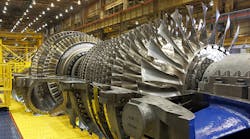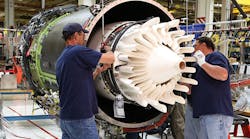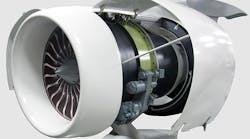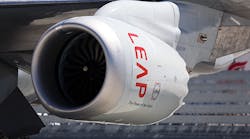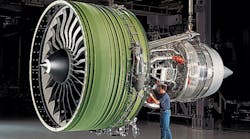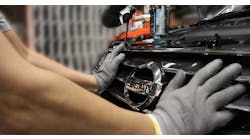GE Aviation is ramping up production levels at its LEAP engine assembly plant in Lafayette, Ind., aiming to produce 500 “hot sections” for the high-bypass turbofan engines this year. Half of those hot sections — i.e., a compressor, combustor, high-pressure turbine, which together generate an engine’s power — will be used to assemble 250 LEAP engines at Lafayette and at another GE Aviation plant in Durham, N.C. The other 250 hot sections will be delivered to Safran Aircraft Engines in Villaroche, France, where another 250 engines will be assembled.
GE Aviation and Safran are partners in CFM International, the joint venture that designed the LEAP series engines. The production increase is necessary to meet the rising demand from aircraft manufacturers. According to GE Aviation, the 500 engines to be built this year will be more than four times as many as the joint-venture partners produced in 2016. Reportedly, CFM has logged more than 12,200 orders for the engines since it was introduced in 2008. The first commercial flight for the engine came in 2013.
The LEAP series consists of three variants: The LEAP-1A is the designated power plant for the Airbus A320neo family; the LEAP-1B is targeted for the new Boeing 737 MAX series; and the LEAP-1C will be manufactured for the Commercial Aircraft Corp. of China Ltd. (Comac), for its new C919 aircraft.
The engines are designed with a fully integrated propulsion system (IPS) and a range of other advanced technologies, including 3D-woven carbon-fiber composite fan blades and fan case; a debris rejection system; “fourth-generation, three-dimensional aerodynamic designs; the Twin-Annular, Pre-Swirl (TAPS) combustor, with additive-manufactured fuel nozzles; ceramics-matrix composite shrouds in the high-pressure turbine; and titanium aluminide (Ti-Al) blades in the low-pressure turbine.
As each of the partners builds the engines separately, in its own plants, GE developed the $50-million, 300,000-sq.ft. Lafayette plant specifically to manufacture components and assemble the LEAP series products. “The facility’s main structure has a 2,500-ton steel frame with a 370-lb column design to support its overhead gantry cranes. This allows minimal movement for the precision engine work taking place,” according to GE Aviation.
With machinery and equipment installed to perform engine maintenance, repair, and overhaul, GE Aviation has invested more than $110 million there. The plant opened in September 2015 with 21 employees, and today has 72 workers. The manufacturer indicated peak employment would be over 230 workers.
